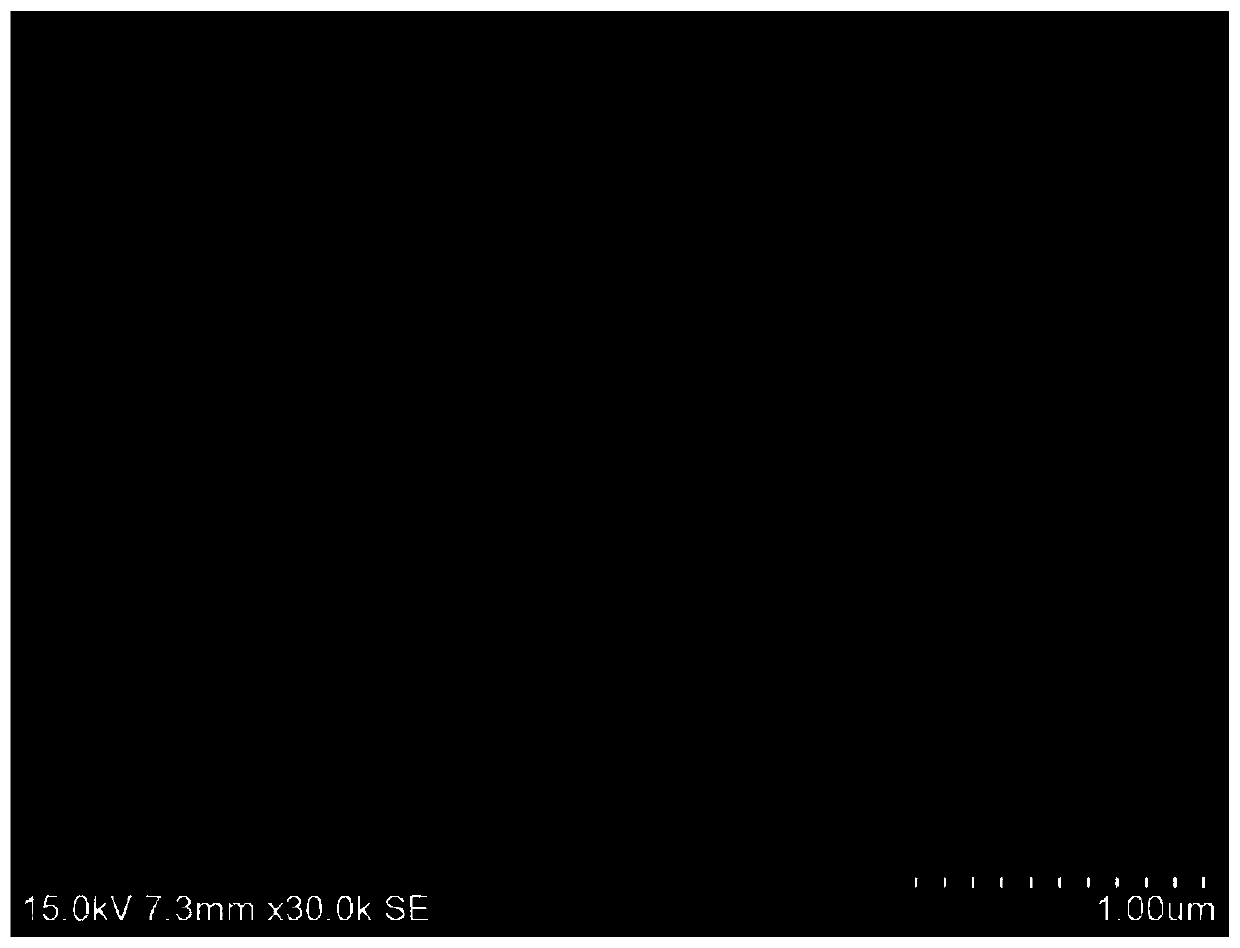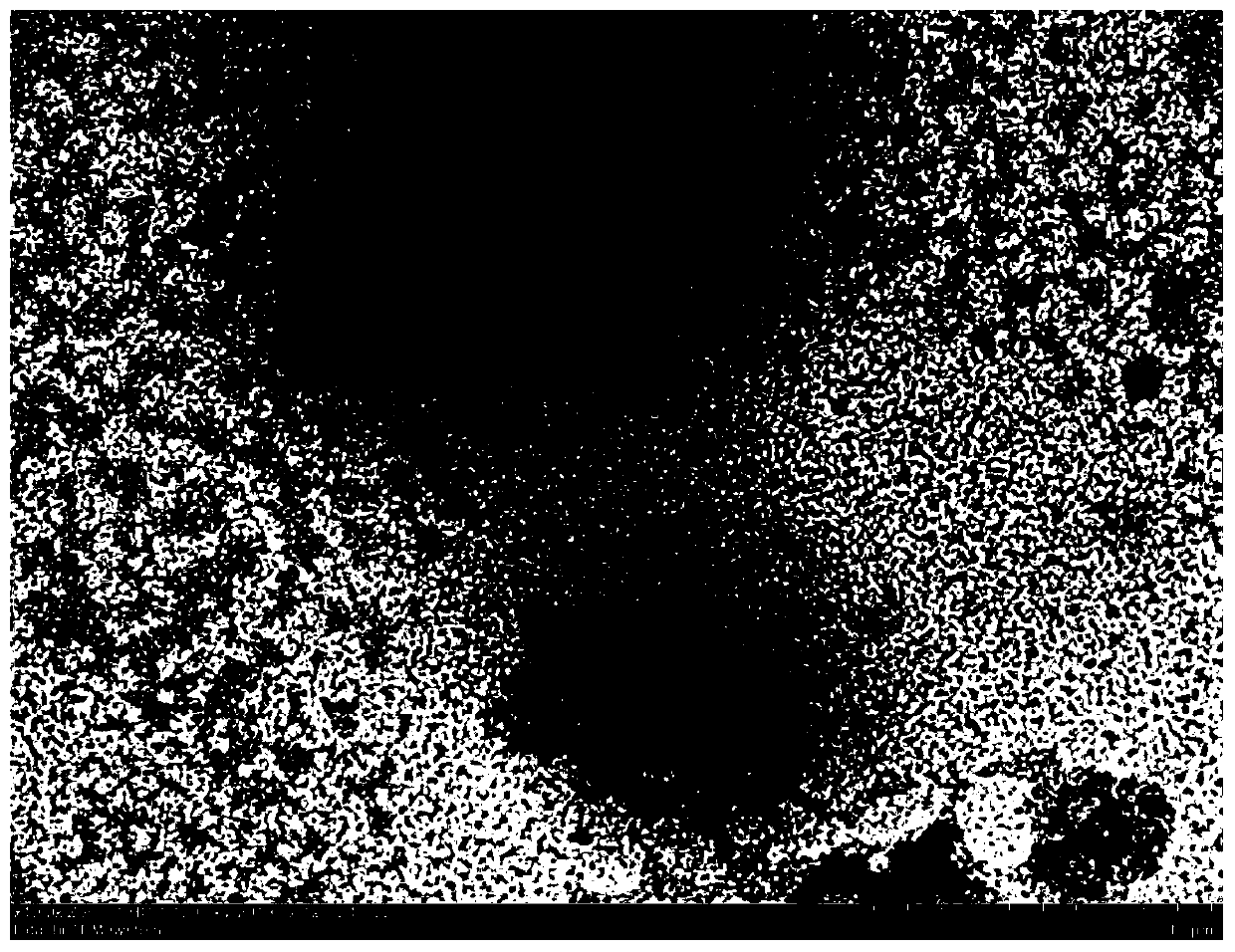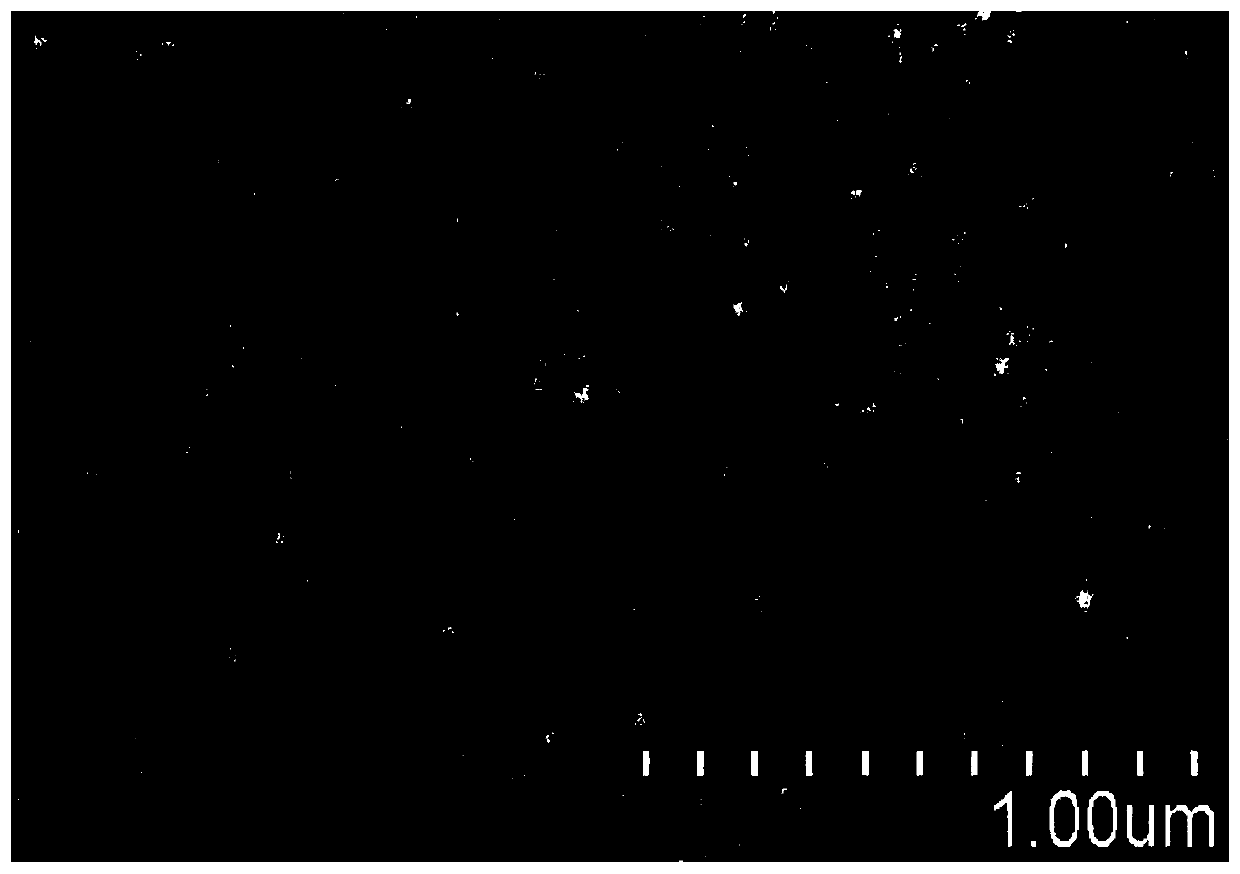Nano photolysis-resistant controlled-release pesticide taking lignin as coating matrix and preparation method thereof
A technology for controlled release of pesticides and lignin, applied in the field of pesticides, can solve the problems of difficulty in generating stable nano-suspensions, unsolved problems of photolysis of emamectin salts, complicated preparation processes, etc., and achieves good resistance to photolysis and oxidation. The effect of anti-oxidation and simple preparation process
- Summary
- Abstract
- Description
- Claims
- Application Information
AI Technical Summary
Problems solved by technology
Method used
Image
Examples
Embodiment 1
[0047] Example 1 Preparation of 3.3% Abamectin with lignin as the nano-anti-photolysis controlled-release pesticide preparation of the coating matrix
[0048] (1) Take by weighing 3.87Kg sodium lignosulfonate and be dissolved in 116L deionized water, leave standstill to obtain the solution of sodium lignosulfonate after dissolving completely, set aside;
[0049] (2) Add surfactant Siben-60 3.8Kg to the solution obtained in step (1), then high-speed stirring emulsification to obtain emulsion;
[0050] (3) Take by weighing 6.3Kg Abamectin and be dissolved in 30L butyl acetate, stir and dissolve, obtain the solution containing pesticide active molecule;
[0051] (4) Weigh 0.1Kg p-phenylenediamine and dissolve it in 20L0.15M H 2 SO 4 , then cool to 0-5°C and add 0.11KgNaNO 2 Continue to stir to obtain cross-linking agent solution;
[0052] (5) The solution of the pesticide active molecule obtained in step (3) was gradually added into the emulsion obtained in step (2) under hig...
Embodiment 2
[0056] Example 2 Preparation of 5% lambda-cyhalothrin nano-anti-photolysis controlled-release pesticide formulation with lignin as the encapsulation matrix
[0057] (1) Take by weighing 4.0Kg sodium lignosulfonate and be dissolved in 120L deionized water, leave standstill to obtain the solution of sodium lignosulfonate after dissolving completely, set aside;
[0058] (2) Add surfactant Tween-80 4.0Kg to the solution obtained in step (1), then high-speed stirring emulsification to obtain emulsion;
[0059] (3) Take 10.2Kg of lambda-cyhalothrin and dissolve it in 42L of ethyl acetate, stir and dissolve to obtain a solution containing active pesticide molecules;
[0060] (4) Weigh 0.12Kg p-phenylenediamine and dissolve it in 20L 0.15M H 2 SO 4 , then cool to 0-5°C and add 0.15KgNaNO 2 , continue stirring to obtain a crosslinking agent solution;
[0061] (5) The solution of the pesticide active molecule obtained in step (3) was gradually added into the emulsion obtained in ste...
Embodiment 3
[0065] Example 3 Preparation of 5% beta-cypermethrin nano-anti-photolysis controlled-release pesticide formulation with lignin as the encapsulation matrix
[0066] (1) Take by weighing 4.0Kg sodium lignosulfonate and be dissolved in 120L deionized water, leave standstill to obtain the solution of sodium lignosulfonate after dissolving completely, set aside;
[0067] (2) Add surfactant Tween-80 4.0Kg to the solution obtained in step (1), then high-speed stirring emulsification to obtain emulsion;
[0068] (3) Take by weighing 10.2Kg beta-cypermethrin and dissolve it in 42L ethyl acetate, stir and dissolve to obtain a solution containing active pesticide molecules;
[0069] (4) Weigh 0.12Kg p-phenylenediamine and dissolve it in 20L 0.15M H 2 SO 4 , then cool to 0-5°C and add 0.15KgNaNO 2 , continue stirring to obtain a crosslinking agent solution;
[0070] (5) The solution of the pesticide active molecule obtained in step (3) was gradually added into the emulsion obtained in...
PUM
 Login to View More
Login to View More Abstract
Description
Claims
Application Information
 Login to View More
Login to View More - R&D
- Intellectual Property
- Life Sciences
- Materials
- Tech Scout
- Unparalleled Data Quality
- Higher Quality Content
- 60% Fewer Hallucinations
Browse by: Latest US Patents, China's latest patents, Technical Efficacy Thesaurus, Application Domain, Technology Topic, Popular Technical Reports.
© 2025 PatSnap. All rights reserved.Legal|Privacy policy|Modern Slavery Act Transparency Statement|Sitemap|About US| Contact US: help@patsnap.com



